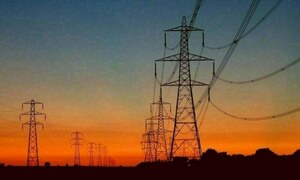For millennia, Australia's rugged southern coast has been carved by the relentless action of waves crashing ashore. The same wave energy could soon be harnessed to power towns and cities and trim Australia's carbon emissions. "Waves are already concentrated solar energy," says Michael Ottaviano, who leads a Western Australian firm developing a method to turn wave power into electricity.
"The earth has been heated by the Sun, creating wind, which created the swells," he told Reuters from Perth, saying wave power had the potential to supply all of Australia's needs many times over. Ottaviano heads Carnegie Corp which has developed a method of using energy captured from passing waves to generate high-pressure sea water. This is piped onshore to drive a turbine and to create desalinated water.
A series of large buoys are tethered to piston pumps anchored in waters 15 to 50 metres deep (49 to 131 feet). The rise and fall of passing waves drives the pumps, generating water pressures of up to 1,000 pounds per square inch (psi). This drives the turbine onshore and forces the water through a membrane that strips out the salt, creating fresh water in a process that normally requires a lot of electricity.
The CETO (named after a mythical Greek sea creature) pumps and buoys are located under water, differing from some other wave power methods, for example, those that sit on the surface. The CETO concept was invented in the 1970s by a Western Australian businessman Alan Burns and initial development began in 1999, followed by completion of a working prototype by 2005.
Ottaviano says the company, which works in partnership with British-based wind farm developer Renewable Energy Holdings and French utility EDF is in the process of selecting a site for its first commercial demonstration plant in Australia. The 50 megawatt plant, enough to power a large town, would cost between A$300 million to A$400 million ($193 million to $257 million) and cover about 5 hectares (12.5 acres) of seabed. Funding could be raised from existing or new shareholders, he believed.
DROP IN THE OCEAN Several sites in Western Australia, including Albany in the south and Garden Island off Perth, looked promising. "There's significant interest in these sorts of projects, even in the current financial environment," he added. And a 50 MW plant was just a drop in the ocean. He pointed to a study commissioned by the company that said wave power had the potential to generate up to 500,000 MW of electricity along the southern half of Australia's coast at depths greater than 50 metres (165 feet).
At shallower depths, the potential was 170,000 MW, or about four times Australia's installed power generation capacity. Interest in renewable energy in Australia and elsewhere is being driven by government policies that enshrine clean energy production targets as well as state-backed funding programmes for emerging clean-tech companies.
"Australia is going to be one of those markets because of what the government is doing to drive investment in this sector. For starters, there's quite a bit of direct government funding for projects like this," he said. The federal government has also set a renewable energy target of 20 percent by 2020, which is expected to drive billions of dollars worth of investment in Australia over the next decade, with much of it going into wind farms.
BR100
11,697
Decreased By
-168.8 (-1.42%)
BR30
35,252
Decreased By
-445.3 (-1.25%)
KSE100
112,638
Decreased By
-1510.2 (-1.32%)
KSE30
35,458
Decreased By
-494 (-1.37%)

























Comments
Comments are closed.